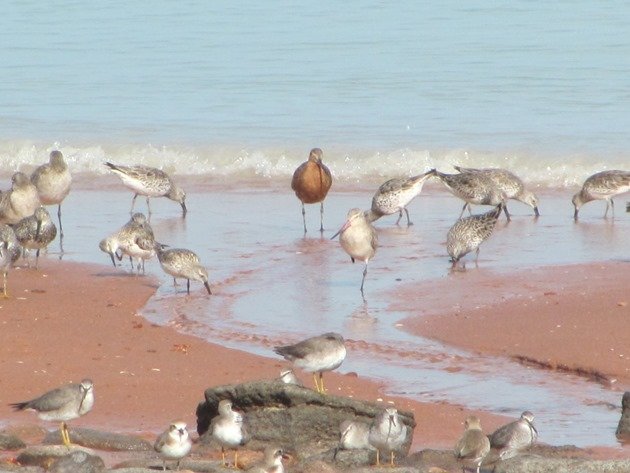
Broome is well-known for its incredible birding, but most importantly Roebuck Bay is recognised as a Ramsar wetland due to its high concentration of shorebirds. The shorebirds are currently getting ready for their northward migration and so it is even more important to minimise disturbance as they fatten up for their incredible journeys. There are flights heading north each evening and these birds will leave our shores to breed in the northern hemisphere. They will call and fly upwards and then either decide it is not quite right to head off on that particular evening or they will get themselves into a V formation and off they go. It is quite an emotional spectacle to watch and you look forward to their return each year. Some migratory shorebirds will remain here throughout our winter months, but the majority will head off.
Currently the shorebirds are all heading into breeding plumage and the degree of colour varies significantly as you can see in the header photo. This particular male Bar-tailed Godwit was immediately picked up by my little camera! The Bar-tailed Godwits are quite a dull colour for the majority of the time they are here in Broome, but prior to migration they become a beautiful golden brown. Of course it is autumn here and these are our “autumn colours”, because we don’t have any trees that get the autumn colours that you are all so familiar with in other areas of the world.
Over the years that I have spent with the shorebirds in Broome I have learnt the best way to observe them close at hand causing minimum disturbance. There’s always the risk of a raptor upsetting them, or people letting their dogs chase them, but I have a beach that I have to myself most days and I use that privilege to my advantage. Due to the fact that I am quite happy to walk with a heavy load most days I am often rewarded for my efforts. It was after a very hot and long walk recently that I was rewarded with the Red-necked Stint that was given Japanese flags last September. Every day has its rewards and every day I realise how lucky I am to have all of this right here in Broome.
When I load up my backpack with my tripod, telescope, camera and plentiful water I aim to be on the beach after high tide. The shorebirds are most relaxed after high tide and it enables me to walk by without disturbing them. I will get very close to the flock and I will sit and watch. Often they will run towards me as I sit on the sand and it is during these moments that I am able to take some photographs of them at close range.
The female Bar-tailed Godwit are still a lot paler than the male Bar-tailed Godwit and the females are a larger bird. The female bill is often significantly longer, though there are some birds whose sex is undetermined due to the fact that their measurements are too close to the median measurement to be sure of the sex.
Bar-tailed Godwits in different stages of breeding plumage
The Bar-tailed Godwits on the beach that I visit do tend to keep to the edge of the flock of migratory shorebirds, but the main species in the flock is usually Great Knot. They are also getting their breeding plumage before they head north and the photograph below shows one walking across to the left.
Bar-tailed Godwits and Great Knot
With patience and knowledge it is possible to get up close and personal with shorebirds. I have sat with these birds for hours and watched them roost, feed and preen and I am in awe of the incredible journeys that they make each year. It will be very sad to see this beach without shorebirds during our winter months, but by then the Pied Oystercatchers will be breeding and I will be on another beach observing their behaviour.


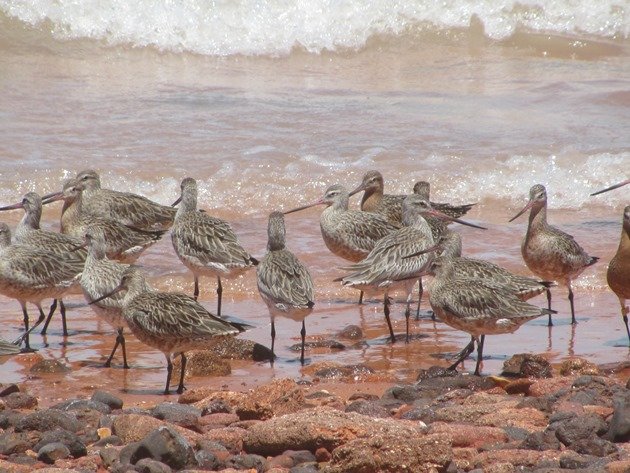
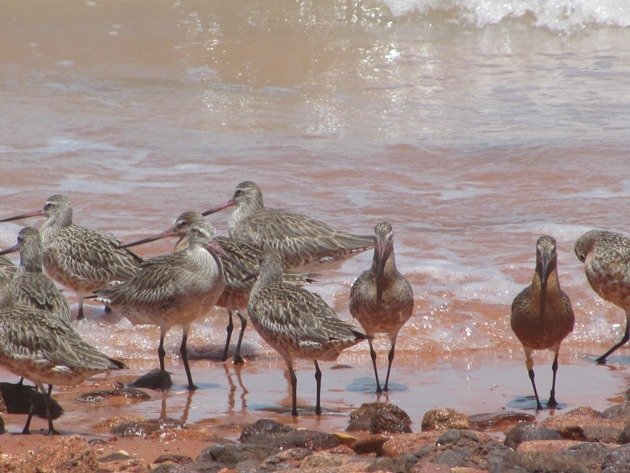
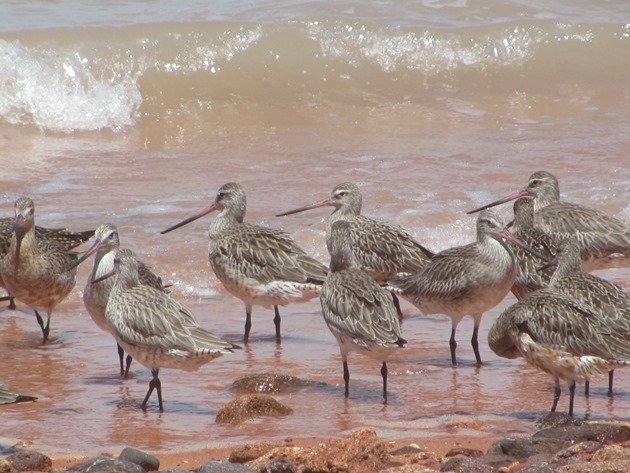
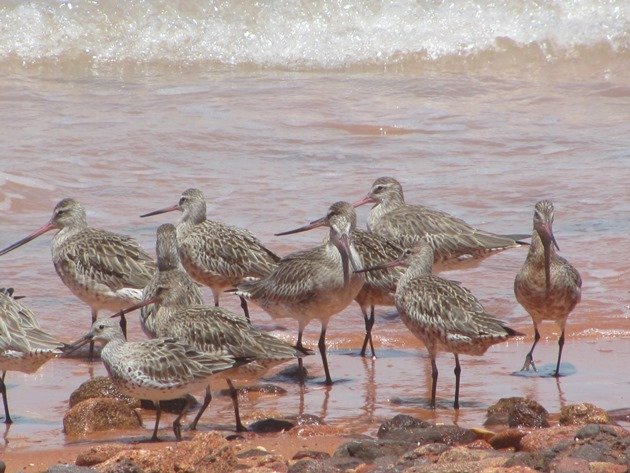
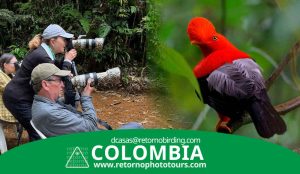


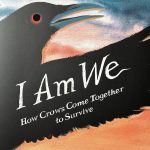
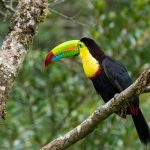
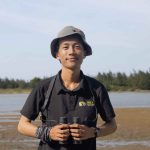
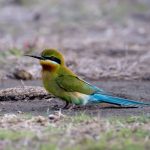
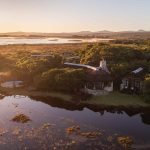
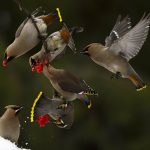
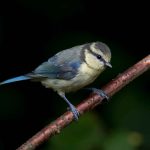
Leave a Comment